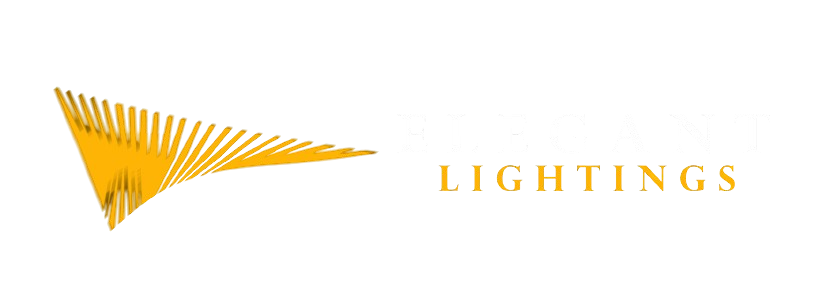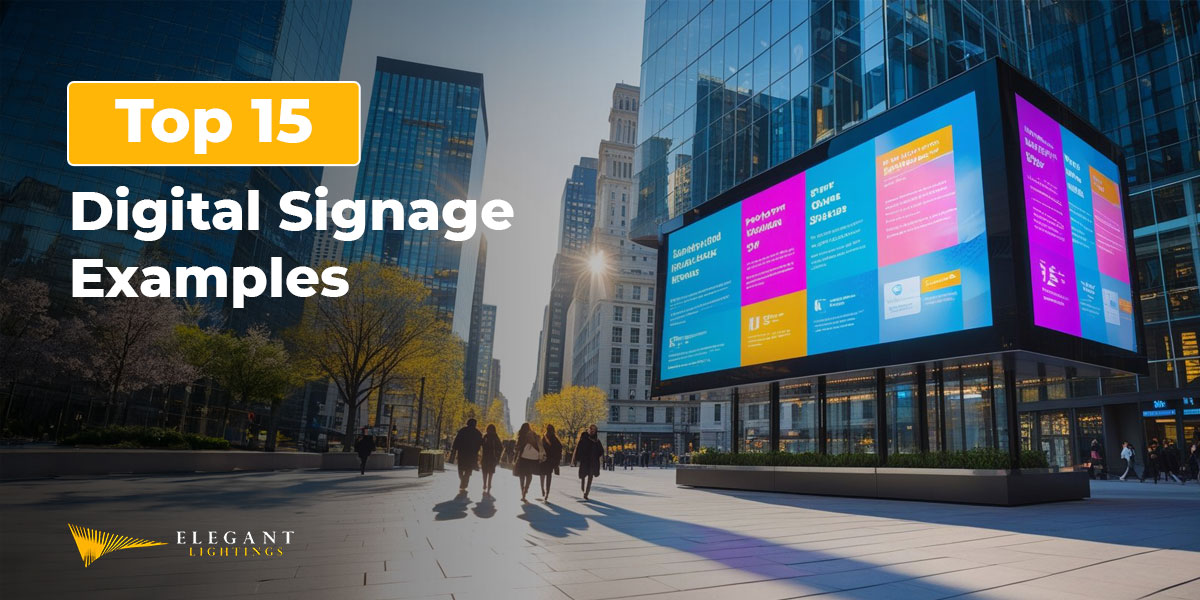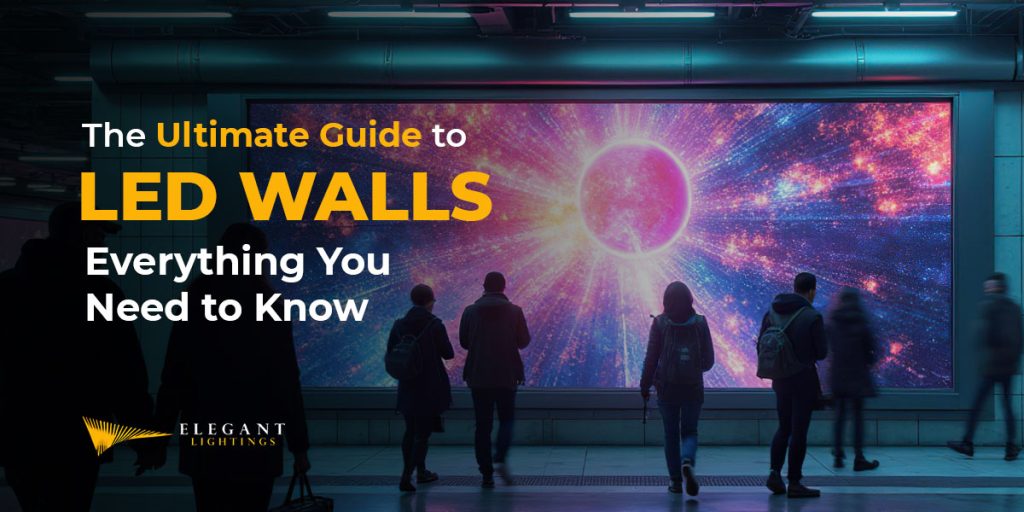
In recent years, LED walls have emerged to become a new, vibrant way of displaying content to a mass audience.
What's on this page:
The evolution began with a wall of televisions connected to create a large screen that multiple people can view in stadiums, arenas, corporate events, weddings, social events and sports cafes.
It gradually gained popularity and became a go-to method for experiencing visual content in various ways, including corporate events, advertising, concerts, retail stores, and public spaces.
However, these early forerunners of an LED wall had several issues with their image quality, resolution, and size.
Today, with the advancement of technology and the emergence of LED walls, these problems have largely been rectified.
Now, LED walls can display videos with clarity and saturated colors, that too at any scale!
Businesses from various industries worldwide have begun using LED walls to enhance their advertising and event experiences, transforming venues into immersive environments.
In this article, we’ll tell you everything you need to know about LED video walls, their benefits, and how your business can benefit from them.
Let’s get started!
The Ultimate Guide to LED Walls: Table of Contents
- What is an LED wall?
- What are the Types of LED Walls?
- What are the Major Applications of LED Walls?
- Why Should You Use an LED Wall?
- How to Choose the Right LED Wall?
- What are the steps of an LED Wall Installation?
- Bring Every Pixel to Life with LED Walls
- The Ultimate Guide to LED Walls: FAQs
What is an LED wall?
An LED wall is basically a large display unit. It is composed of multiple individual LED panels that are connected to form a single screen or display.
A surface-mounted device (SMD) type LEDs are used in these displays. That’s the reason why LED walls provide visual content that is consistent and accurate.
In these LED walls, you can display various images, animations, videos, and graphics. Its control systems can be used to calibrate displays for indoor and outdoor settings.
What are the Types of LED Walls?
LED walls are one of the four types, and here they are.
1. Indoor LED walls
Indoor LED walls are built for environments that need controlled lighting conditions. They can be halls, conference rooms, theaters, and such indoor settings.
Since they do not operate under direct sunlight, they feature a lower pixel pitch, allowing your target audience to view them from a distance. If you use it as a background, in that case, the pixel pitch needs to be higher. Overall, it provides clear and sharp visuals.
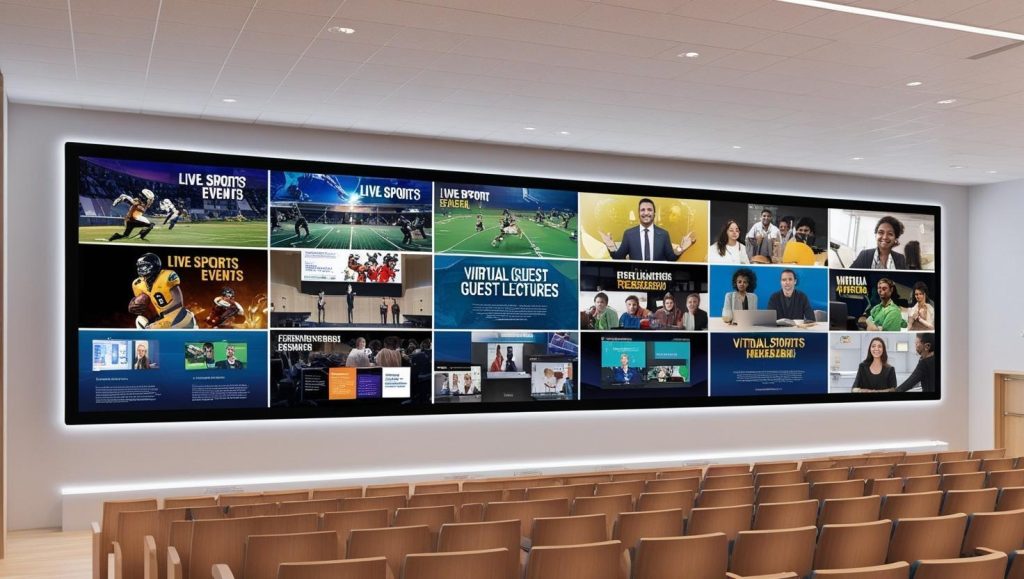
2. Outdoor LED Walls
Its use is evident from the name itself. Outdoor LED walls are specifically designed for use in outdoor environments. You can use these LED walls for events, concerts, and even advertising.
They have brightness calibration in a way that ensures your content remains visible even under direct sunlight. Plus, they are capable of withstanding tough weather conditions.
3. Cube LED wall
A Cube LED wall is a type of display that features a cube-shaped structure, with content displayed on its sides.
Its LED panels are arranged in a precise cube formation, providing an immersive and 3D experience for the audience.
This type of wall needs dedicated hardware and software to display content. It can be a costly investment, but its unique experience is worth it.
You can provide your target audience with a memorable and interactive experience.
4. Curved LED wall
LED walls also come with curved displays.
A Curved LED wall features a curved display that can be used in exhibitions, events, retail stores, and other venues. It could be your ideal solution if you need to display a unique visual experience for your audience.
You can easily calibrate them to different sizes and shapes according to your convenience, creating an appealing content projection and making a wonderful impact.
What are the Major Applications of LED Walls?
There are various applications of LED walls in multiple industries. Let’s explore them one by one.
1. Corporate Meetings, Retreats, and Presentations
In our experience, the most widespread application of LED walls will be in corporate settings.
This LED wall can present your business information clearly and engagingly. You can use it in annual general meetings (AGMs), seminars, presentations, product launches, and training.
In an AGM with stakeholders, your brand messaging can be strengthened by showcasing your portfolio, logo, and other relevant materials.
2. Shows and Events – Live Sports, Concerts, etc.
Sports enthusiasts don’t miss a moment of the game!
You’ll see it in sports stadiums, where real-time scores, replays, player reactions, audience interactions, and statistics are displayed. And all of this is made possible by the magic of LED walls, which show vibrant clips of every single moment that capture the imagination of the most avid sports fans.
Artists use it as a backdrop in their concerts to sync the visuals with the music, offering an experience that the audience can never forget.
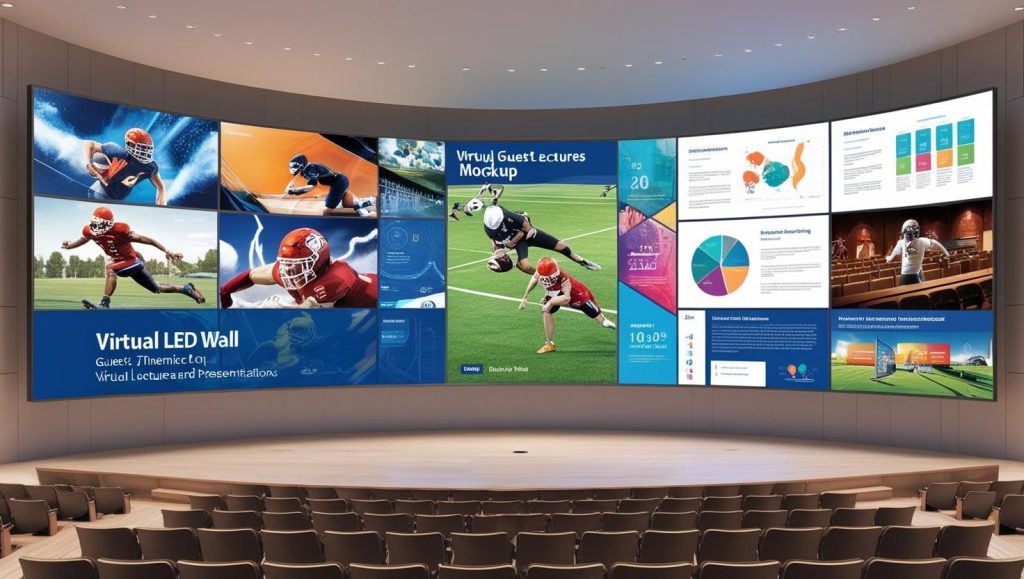
3. Outdoor Advertisements
Outdoor LED walls have transformed the advertising experience.
Unlike traditional billboards, LED wall displays can display multiple advertisements within a specific time frame. So, if you’re looking to maximize the revenue for your advertising firm, an LED wall could be your perfect solution!
Since the visual experience is phenomenal, brands can easily capture the attention of pedestrians and passersby within seconds!
Additionally, it can withstand harsh weather conditions and continue to display content.
4. Entertainment Venues – Cafes, Theatres, Amusement Parks
Nowadays, LED walls are commonly used in the hospitality and retail sectors to display thematic visuals, live sports, or promotional content. It enhances the dining experience, increases the time people spend at entertainment venues, and keeps the customers coming back!
Theatres use it as a backdrop to enhance the storytelling experience and transitions. Using LED walls, Amusement park owners can guide visitors, display showtimes, and create interactive zones.
5. Newsrooms, Educational Events, etc.
You must have seen a news channel where there’s an informational background behind the journalist speaking. And that’s an LED wall that seamlessly projects an immersive experience, combining visuals and information.
Modern educational institutions use LED walls in their Lecture halls and auditoriums for presentations, virtual guest lectures, and online classes.
LED walls bring exhibitions to life, offering interactive displays that engage visitors and provide in-depth information.
Why Should You Use an LED Wall?
In our experience, there are several direct and indirect benefits you can derive from using LED walls. These include:
- You deliver a clear, bright, and smooth visual experience that works great indoors and outdoors.
- LED walls can reach up to 8K resolution, making them ideal for large setups.
- Their vivid display quickly grabs attention, making it easier to engage your audience.
- LED walls are highly flexible: they come in various sizes and are fit for any venue.
- They’re tough too, built to handle long hours and even rough weather.
- Modern LED walls consume less power, allowing you to save on costs and contribute to a healthier environment.
How to Choose the Right LED Wall?
If you’re convinced that LED walls can help you enhance the experience of your target audience but don’t know how to choose the right LED wall, we’ve got you covered!
Consider these factors before finalizing your choice of an LED Wall:
- Define Your Purpose: Explain why it will be used. You can use LED Walls for events, corporate AGMs, advertising, entertainment, or education.
- Determine the Space: Measure the wall area to choose the right size and aspect ratio.
- Measure Viewer Distance: You’ll need a 1-2mm pixel pitch for the closer audience and 3-6mm for the audience at a distance.
- Fix Resolution: Depending on your content and location, you will need to adjust the display resolution requirement.
- Designate the Location: Be precise about whether you need it for indoor or outdoor use. Outdoor LED walls must be weatherproof, so they should have an IP65 rating or higher, and their brightness should exceed 5,000 nits.
- Finalize Content Type: Think about the type of content as well that you’ll be showing. For fast-moving videos or live feeds, you’ll need a high refresh rate of around 3000Hz or more.
What are the steps of an LED Wall Installation?
There are four simple steps to an LED wall installation:
1. Site Assessment: You’ll need to conduct a thorough site survey, evaluating factors such as space, power supply, and environmental conditions, to determine if the site is suitable for installing an LED wall.
2. Panel Assembly: After the site is finalized, the panels are mounted and assembled on a frame or wall structure.
3. Wiring and Connectivity: Next, connect the panel to the proper power supply to initiate operations and to the control systems to manage the displayed content.
4. Calibration and Testing: Lastly, the assembled system is calibrated to match your requirements of content quality.
While these are the steps followed in an LED wall installation, you can rest assured that professional LED wall sellers and distributors can handle the installation for you.
Bring Every Pixel to Life with Our LED Walls
A strategically designed LED wall can create a visually impactful experience for your audience and enhance your brand’s presence.
Regardless of the purpose, all you need is the right type of LED wall that best serves your needs and enhances audience interactivity.
For such strategic design and choosing the right LED wall, you need an expert.
Let Elegant Lightings be the expert that lights up your event with the perfect LED walls that work for all occasions.
We don’t just manufacture LED walls, we engineer visual solutions tailored to your space, content, and audience.
Contact us to discover more about our offerings and how we can enhance your space with stunning displays that capture attention and leave a lasting impression.
The Ultimate Guide to LED Walls: FAQs
1. What is the best resolution for an LED wall?
The ideal pixel pitch for close-up views is 1.2mm–2.5mm, and for distant audiences, it is 3mm–6mm.
2. What are the essential components required to operate an LED wall?
The components of an LED wall include:
- Panels
- Video processors
- Controllers
- Power supplies
- Wiring for data and electricity,
- Mounting frames.
3. How do LED walls work?
LED walls display visuals by using individual LED panels, which processors and controllers control.



